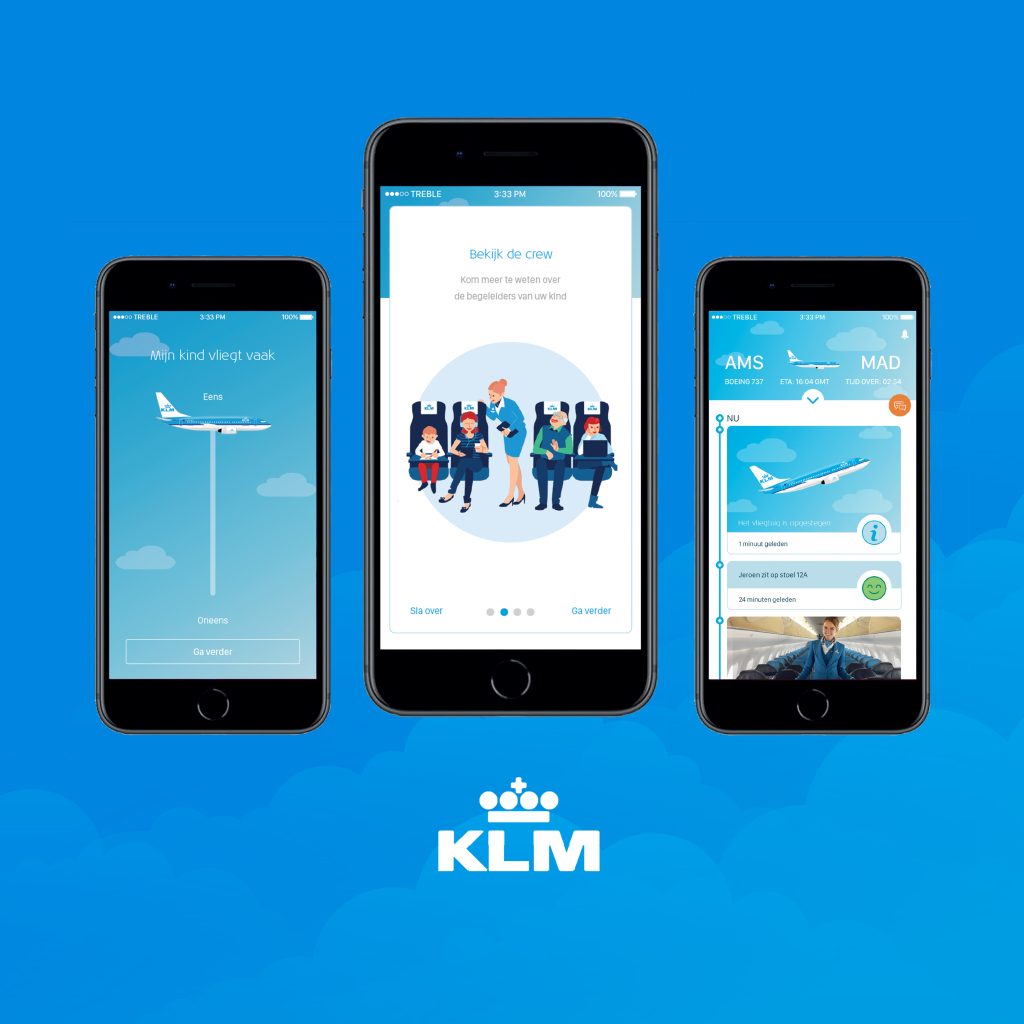Redesigning KLM's Unaccompanied Minor Service

For my bachelor thesis I researched on how to improve KLM’s Unaccompanied Minor Service (UMS). The goal was to create a digital concept/prototype. The UMS is a mandatory service for unaccompanied children between the ages of 5 and 14, whereby the children are assigned an attendant who guides them to the airplane.
Research has shown that the parents of Unaccompanied Minors are very restless and anxious when their child is flying alone. They are afraid that their children will be anxious during the trip, although the UM’s themselves experience few to no problems during the service. In fact they feel tough, mature and independent.
The scope of the research is therefore focused on how the parents of the UM’s can be more reassured and confident. Interviews showed that they mainly needed interim contact and updates about where their child is and how they are doing.
The following research question was formulated:
“How can KLM improve the information provision for parents of the current Unaccompanied Minor Service?”.


Because ‘parents’ is a broad target group, we looked at what kinds of parents there are and archetypes were drawn up for this. The theory of ‘designing for extremes’ was used to determine which archetype to design for. When you design for the two extremes on the spectrum, the types in between will also benefit from the design.
As an answer on the research question I prototyped an app called HappyAppy.
HappyAppy is focused on the parents by providing insight and confirmation in the journey that their child is making, who is guiding their child and the possibility to anticipate by means of a chat function with their guide. The app asks parents questions about how experienced their child is with flying alone and how anxious the parent is. This way the the guides get more insight and can adjust the guiding to fit the child and parent’s needs.
Prototype 1
Prototype 2
Prototype 3 (final)
Here you can see the progress of developing the prototype. After developing every prototype I ran user tests on parents to find what needed to be improved for the next prototype. The prototype and my entire proces of how I got to the prototype were presented on my final graduation presentation.